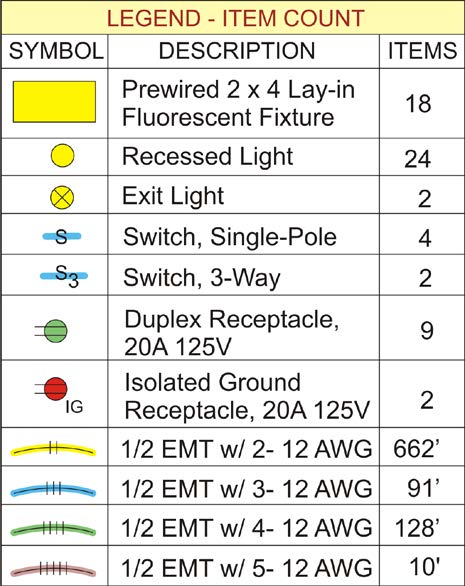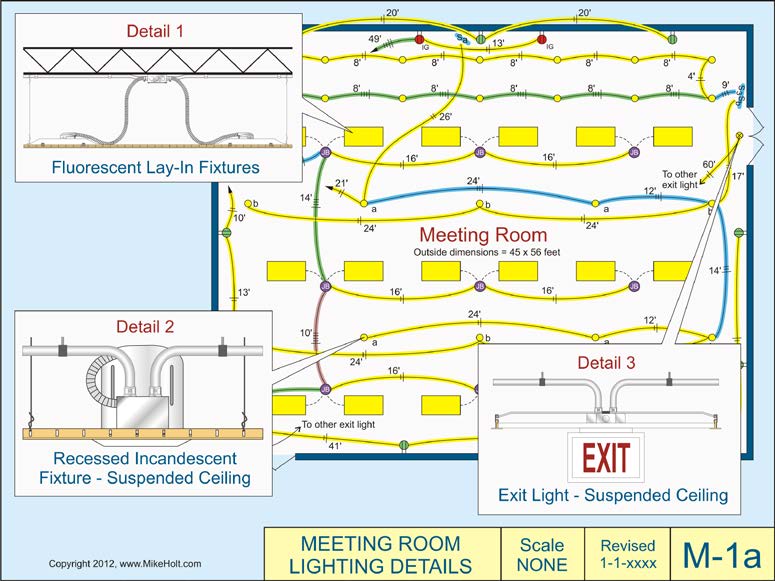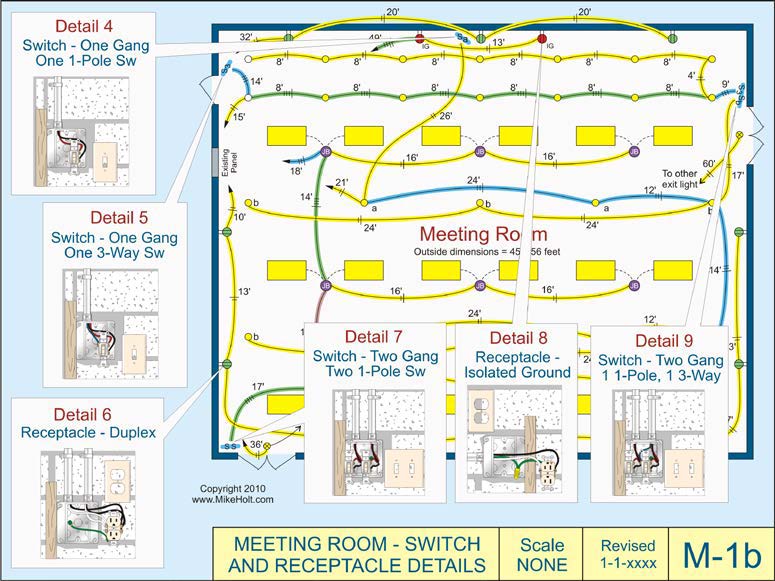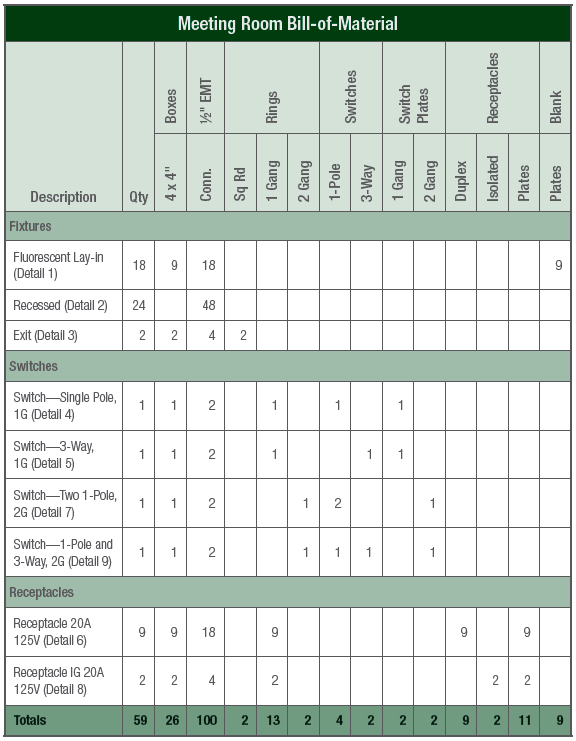|
Estimating is a skill that can make or break a career or
company. Understanding the estimating and bidding
processes is essential for your business to remain
profitable.

This is newsletter #29 in the series. If you have
missed prior newsletters, and are enjoying the series,
we encourage you to purchase the complete Electrical Estimating Program.
Click on the coupon at the bottom of this page.
|
The Estimating Process - Determining the Bill-of-Material (Manual Estimate) |
Once the take-off is complete, the next step is to determine the bill-of-material, which means determining the type, size, and quantity of all material items required to complete the installation. Figure 1

Figure 1
If you are estimating manually, determining the bill-of-material requires the estimator to have the ability to visualize all of the material items needed for each symbol. If you don't understand the electrical wiring requirements or don't have that visualization ability, you can't determine the bill-of-material, which means you really can't estimate the job properly. Figure 2 and Figure 3
Author's Comment: If you are estimating the job with computer software, the bill-of-material is automatically generated from the take-off based on the assemblies used during the count. It's still necessary for the estimator to be aware of the parts required for the assembly to be able to verify that the software is generating the correct items.

Figure 2

Figure 3
Material Spreadsheet
The most efficient manner to extract the bill-of-material from a manual take-off is with a computer. Using a simple spreadsheet, counts can be typed into a cell that populates the total quantity of a certain piece of material in another cell automatically. This method is simple, but requires knowledge of spreadsheets and great care when working. Be careful, a simple formula error in one cell or typing a count into the wrong cell can change the totals greatly.
Author's Comment: The following spreadsheet (Meeting Room Bill-of-Material Spreadsheet) is based on the Meeting Room Drawing. See Figure 4

Figure 4
|
|
| We'd love to hear from you about this series,
and the ways you're using it. Send us your comments and feedback by clicking on
Post a Comment below. Look out for the next part
in this series a month from now, and please share
with your colleagues. |
|
|
|
|

